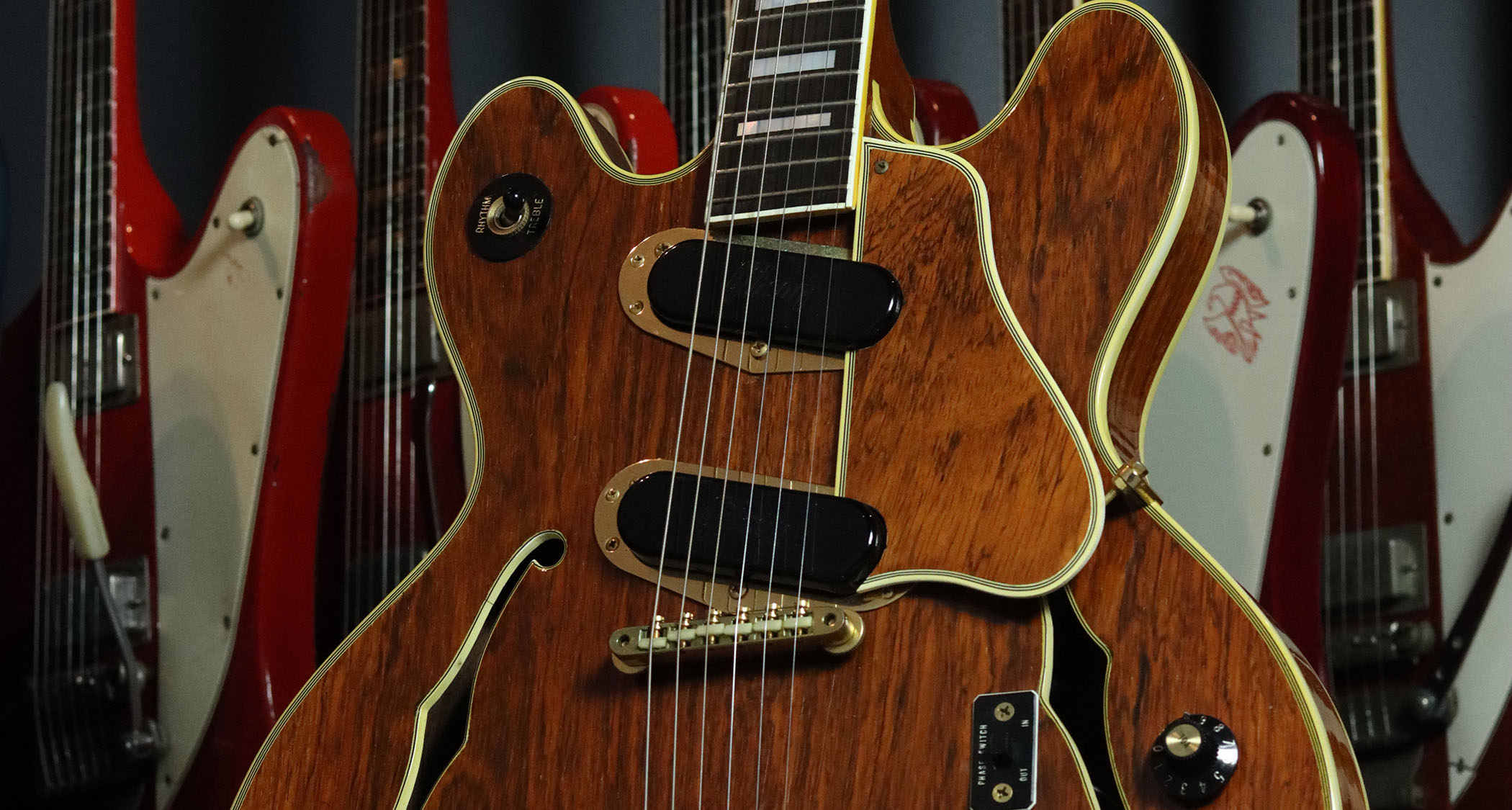“It needs a tune – but we’ll do that free of charge!” Meet the Gibson Firebird that Jimmy Page lost in a drinking game with John Bonham
This heavily modified Non-Reverse Gibson Firebird III is a lost Led Zeppelin guitar with a fascinating history – we get the story behind the Page-owned beauty and the buoyant market for Gibson’s under-appreciated cult hero
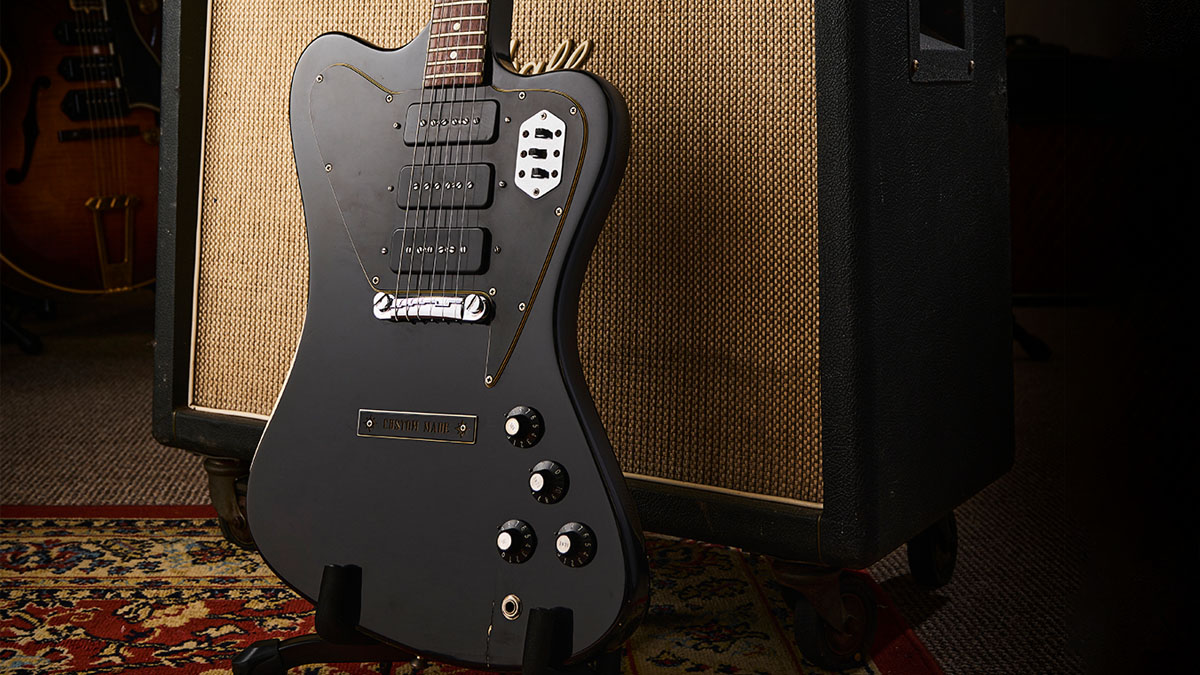
When it comes to the vintage market, few rules are set in stone. Consider the curious case of the Gibson Firebird. Launched in 1963 to a general shrug of shoulders, not even high-profile exponents like Brian Jones and Blind Faith-era Eric Clapton could boost the model’s sales beyond a desultory trickle.
But as Mike Long of UK vintage specialist ATB Guitars explains, that same outlier status now makes the Firebird an excellent lower-priced entry point for first-time collectors. But when true one-offs come to market – like this stunning non-reverse III circa 1968, with its irresistible Led Zeppelin connection – all bets are off as to what they can command as collectible instruments.
Can you tell us the story behind this Firebird and how it came to ATB Guitars?
“We were contacted by the owner to ask if we were interested in selling it and he relayed the story. The owner worked for a property development company of which John Bonham was the partner.
“Before John became the world’s most famous drummer, he wasn’t sure if things were going to work out, so he still had this company, and the owner of this guitar was his business partner. As Led Zeppelin became well known, John sold his stake and his partner bought the business out, but they remained great friends.
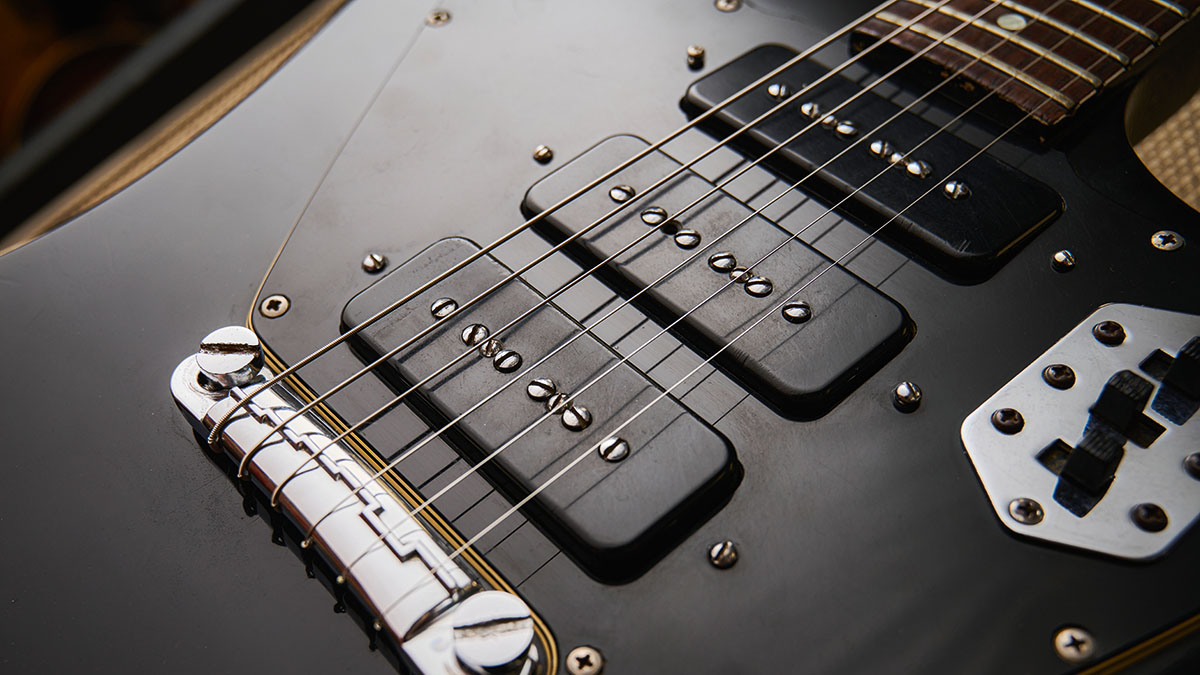
“This Firebird was bought by Jimmy Page from Mike Ladd’s Guitar City in Memphis, Tennessee. He bought, at the same time, a purple Les Paul that he’s been pictured playing. Page bought this Firebird as you see it now.
“It’s basically a heavily modified III, with three pickups and Jaguar-style switching. It’s been painted black and looks quite fetching. The pickguard has been replaced and it’s got a ‘Custom Made’ plaque on it. The modifications were done before Page bought it, by the technician who worked for Mike Ladd’s shop, Tom Keckler.”
All the latest guitar news, interviews, lessons, reviews, deals and more, direct to your inbox!
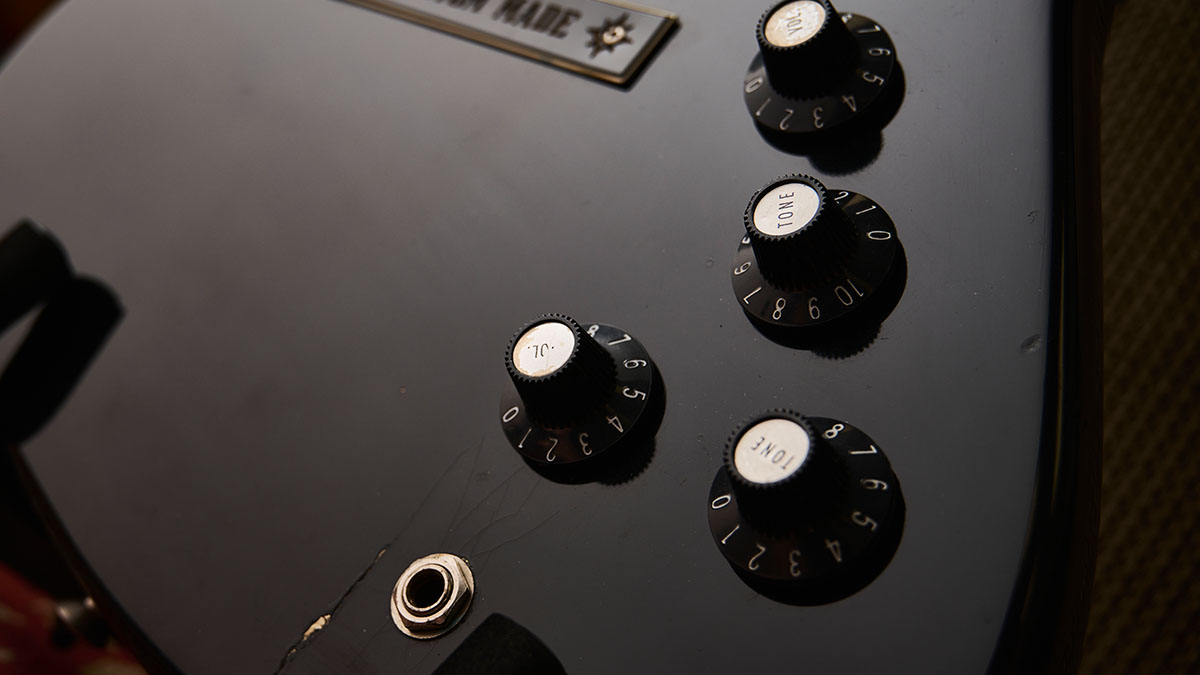
How much do you know about Page’s ownership of the Firebird?
“He obviously saw it in the shop, played it, liked it and bought it. We don’t know how long Page had it for. We don’t know if it’s been used on any recordings or concerts – I’d love to find out. But we know he was playing Spoof with John Bonham; Spoof was a drinking game that was popular in the ’70s.
“So John Bonham won the game [and the guitar], he had it for a while then gave it to his old business partner. This story has been verified by Mike Ladd’s shop. Also, Jason Bonham is aware of the guitar’s history and he knows it used to belong to his dad. So it’s got good provenance. And it’s the first time it’s surfaced in many years.”
Because of the style of the tuners, we think it’s circa ’68. It’s a non-reverse body
Where does this particular model sit within the Firebird pantheon?
“Because it’s been refinished, the serial number was overwritten. However, because of the style of the tuners, we think it’s circa ’68. It’s a non-reverse body. Basically, if you follow the Firebird timeline, in 1965, Gibson changed them to non-reverse. I can show you a reverse body Firebird for comparison.
“This is a 1964 reverse-body VII in Cherry Red [pictured over the page]. Very rare. You can immediately see the difference. That was a pretty drastic change in 1965 and it probably signalled the death knell for the already not-very-popular Firebird. Once they were changed in 1965, they only continued for a few more years – then they were dropped from the Gibson line.”
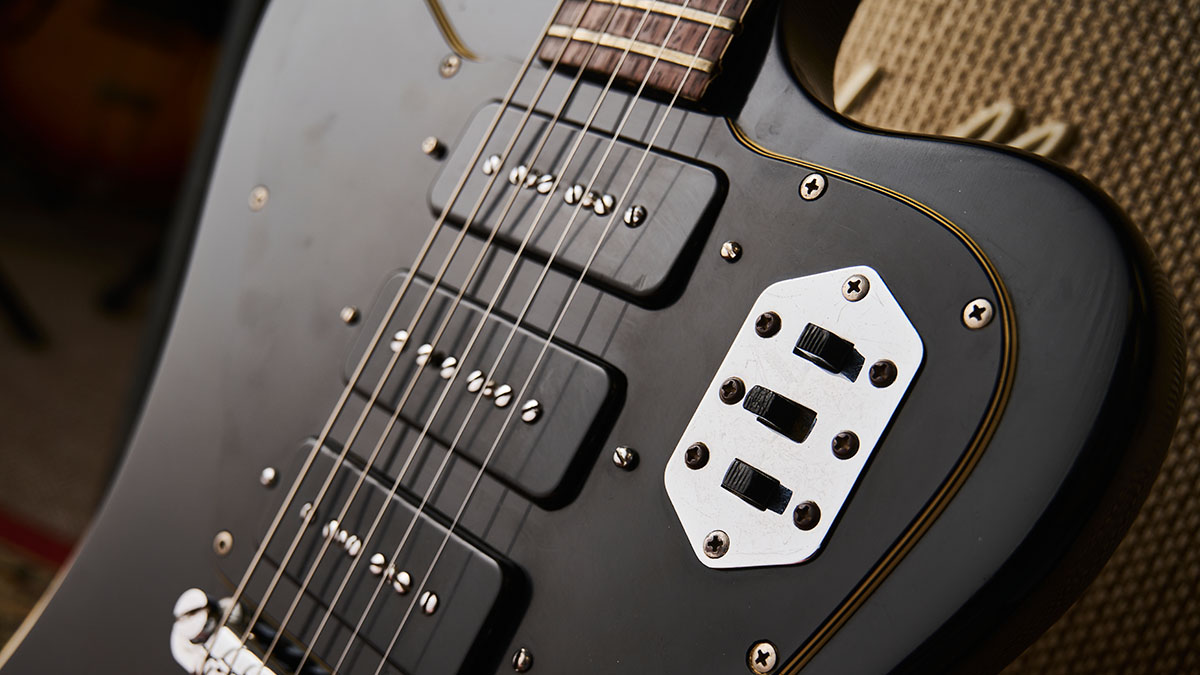
In the Firebird market, how does demand vary between reverse and non?
“Reverse bodies are far more popular and desirable. To the extent that a reverse will be worth probably three times as much. However, people like Brian Jones used to play a non-reverse, as well as a reverse. Also, Noel Gallagher was famous for using a non-reverse. I think Phil Manzanera did Firebirds the biggest favour by sporting that nice Cardinal Red VII with Roxy Music. He just looked the king of cool, didn’t he?
“Because they’re more affordable, Firebirds have become more popular over the last 20-odd years. People find they’re still great guitars, but it’s a matter of taste more than anything and whether you like the styling. I think they’re a good entry point into owning classic Gibsons. They’re great bargains at the moment.”
I think Phil Manzanera did Firebirds the biggest favour by sporting that nice Cardinal Red VII with Roxy Music. He just looked the king of cool, didn’t he?
Which Firebirds are the most common and which are the hardest to find?
“In terms of reverse bodies, the most common is a III. You see many more of those than any others. The I is the next most common, but you tend to get a huge price jump because the Firebird I with the single pickup is the one Eric Clapton used in Cream, so it’s got that [connection].
“Then you have the VIIs, which are rare. The VII was the top of the range model with ebony ’board, gold-plated parts. Again, not very many were sold. This one is a Cherry Red – a custom colour – and I think it’s the only one ever made. It’s exceptionally rare. Again, with all these Firebirds, custom colours will add probably five times the price. I’ve seen custom-coloured VIIs going into six figures.
“With the non-reverse Firebirds, it’s pretty similar. The III is the most popular, but the I is not that popular; I don’t think anyone uses it. Most people will use the III or VII, with the III being the most popular.”
It’s interesting that the association with Clapton drives up the I’s price, even though it’s arguably less flexible. But it does have a beautiful simplicity.
“It does, I totally agree. The other thing with that guitar is that it’s the only one in the Firebird line that doesn’t have a whammy bar fitted. It came from the factory with a wrapover tailpiece, whereas all the other Firebirds had some kind of whammy bar fitted.”
Were custom colours for the non-reverse more prevalent than for the reverse models, just because it was later into the ’60s?
“I would say it’s easier to find a non-reverse in custom colours than a reverse. They do some really nice custom colours in the Firebird range, like Inverness Green or Heather Mist poly, as well as Ice Blue, I think it’s called. But again, it’s easier to find in a non-reverse model. Reverse-body custom colours are very rare and do tend to attract quite a premium.”
It needs a tune – but we’ll do that free of charge! We’ve left it as John Bonham last had it
What are the special considerations with artist-owned guitars? When you get into the realms of who owned what, it must become more complex.
“It’s infinitely more complex, and by far the most important part is provenance. You have to make sure that [information] is solid before you start advertising ‘this guitar used to belong to so-and-so’.
“Especially if it concerns people who are still alive because they can always come up and say, ‘Oi, I didn’t own that!’ We once had a Marshall we advertised as ‘ex-Bryan Adams’. He actually contacted us and said, ‘That’s not mine, I’ve still got it.’ It transpired the amplifier wasn’t used by him, but by one of the other band members. So we changed it to ‘ex-Bryan Adams Band’. But he was very nice about it.”
Can you describe what this particular Firebird III is like to play?
“It’s good. It hasn’t been played for quite a while. It needs a tune – but we’ll do that free of charge! We’ve left it as John Bonham last had it. We haven’t changed anything. The guy we bought it off wasn’t a guitar player, so I don’t really know why John Bonham gave it to him. I mean, John obviously wasn’t a guitar player, either…”
Where do Firebirds sit in the market relative to other Gibsons?
Most players will look for a Strat, Tele, Les Paul, whatever, and then at some stage, when they’ve got all those, they’ll look at Firebirds and other things
“That’s a good question. Firebirds have never, ever really been popular guitars. They weren’t when they were originally made and, even today, they’re still not massively popular. They’re never number one on most players’ lists.
“Most players will look for a Strat, Tele, Les Paul, whatever, and then at some stage, when they’ve got all those, they’ll look at Firebirds and other things. I don’t think there’s many people who’d pick a Firebird as their number-one guitar without having anything else in the back room.
“That’s probably not going to change until somebody really famous starts playing one. But that’s good because it keeps values down and allows people to enter the vintage marketplace reasonably easily, especially with non-reverse Firebirds.”
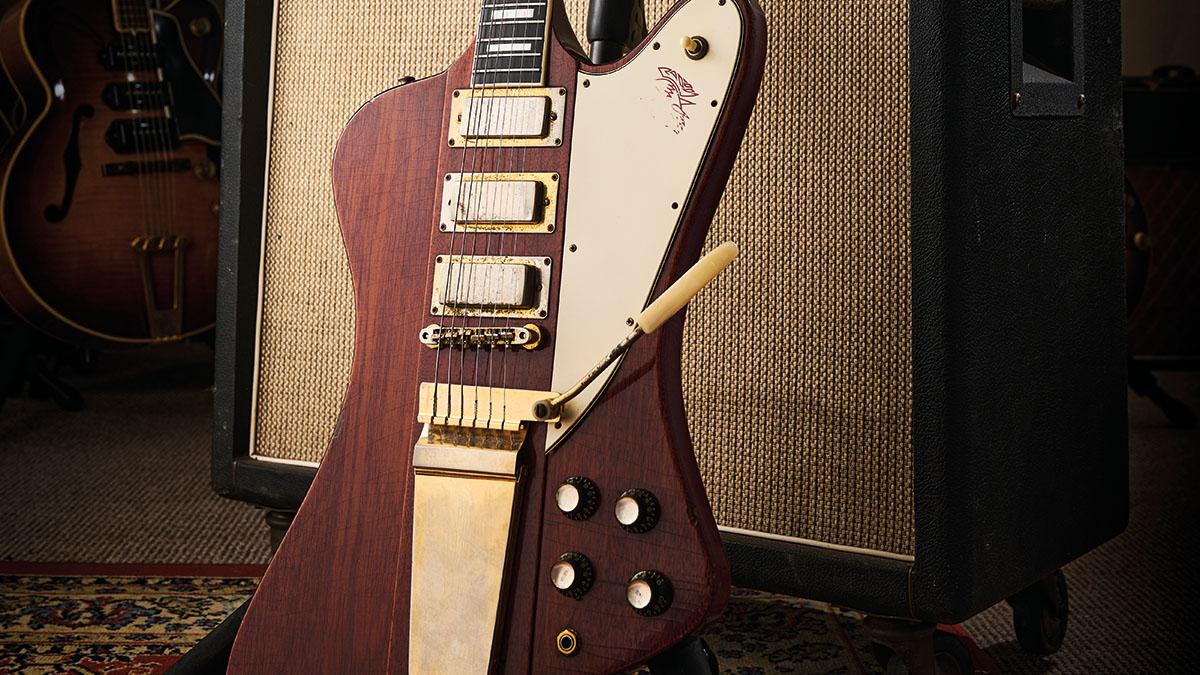
What other areas are good to look at if you’re entering the vintage market?
“Certainly, Firebirds are a very exciting area. They’re unique. They have their own little foibles and they’re cool guitars as well. Other areas people might want to look at are Melody Makers. They’re starting to get on a rise now, especially the early 60s double-cut ones with two pickups.”
Finally, how often do you tend to have Firebirds come in at ATB?
“We’ve always enjoyed having Firebirds. I don’t think there’s ever been a point where we’ve not had at least one. We particularly like the reverse-body ones and the VIIs, and when we have really nice custom colour ones, I’m amazed at how quickly they spring out of the door.”
Jamie Dickson is Editor-in-Chief of Guitarist magazine, Britain's best-selling and longest-running monthly for guitar players. He started his career at the Daily Telegraph in London, where his first assignment was interviewing blue-eyed soul legend Robert Palmer, going on to become a full-time author on music, writing for benchmark references such as 1001 Albums You Must Hear Before You Die and Dorling Kindersley's How To Play Guitar Step By Step. He joined Guitarist in 2011 and since then it has been his privilege to interview everyone from B.B. King to St. Vincent for Guitarist's readers, while sharing insights into scores of historic guitars, from Rory Gallagher's '61 Strat to the first Martin D-28 ever made.



